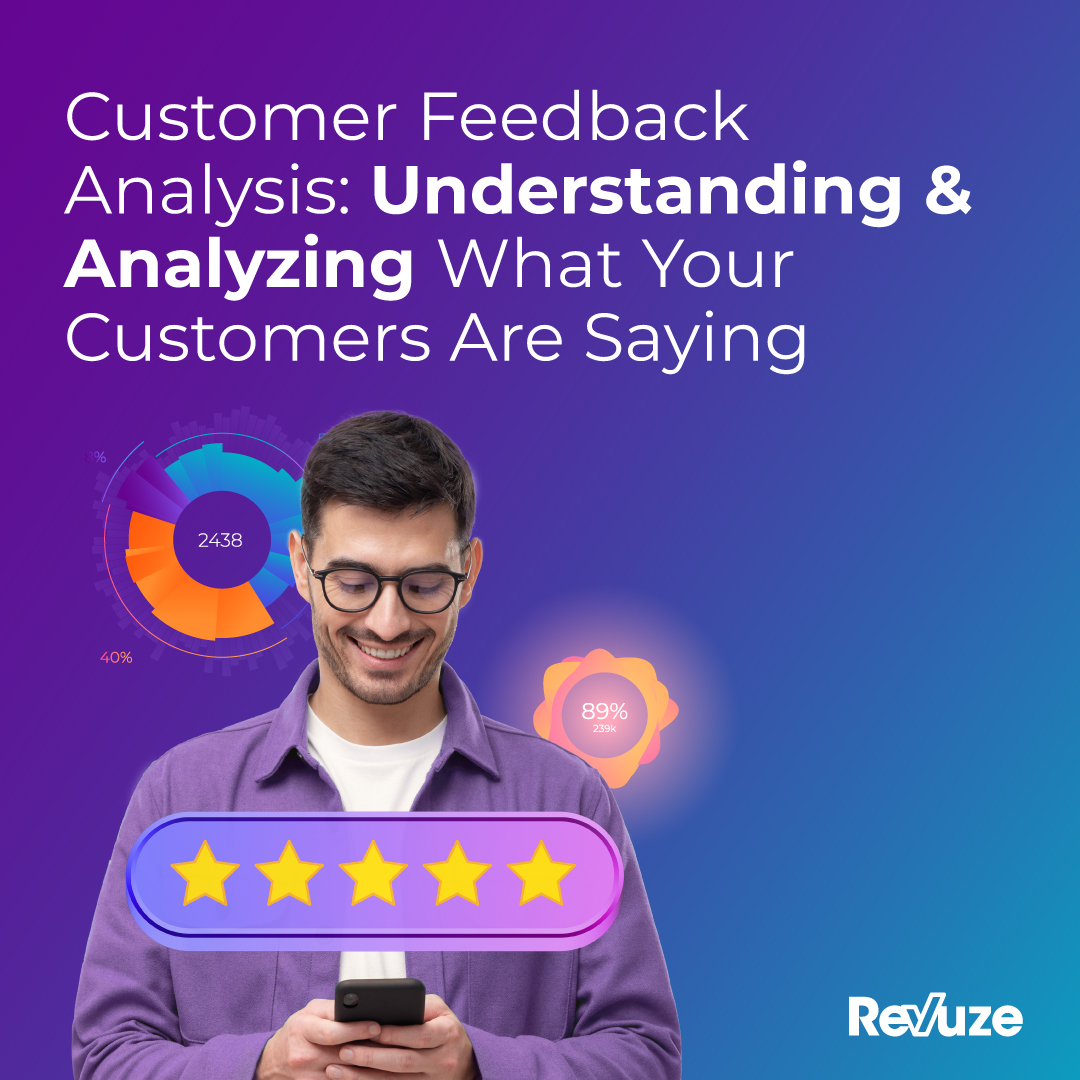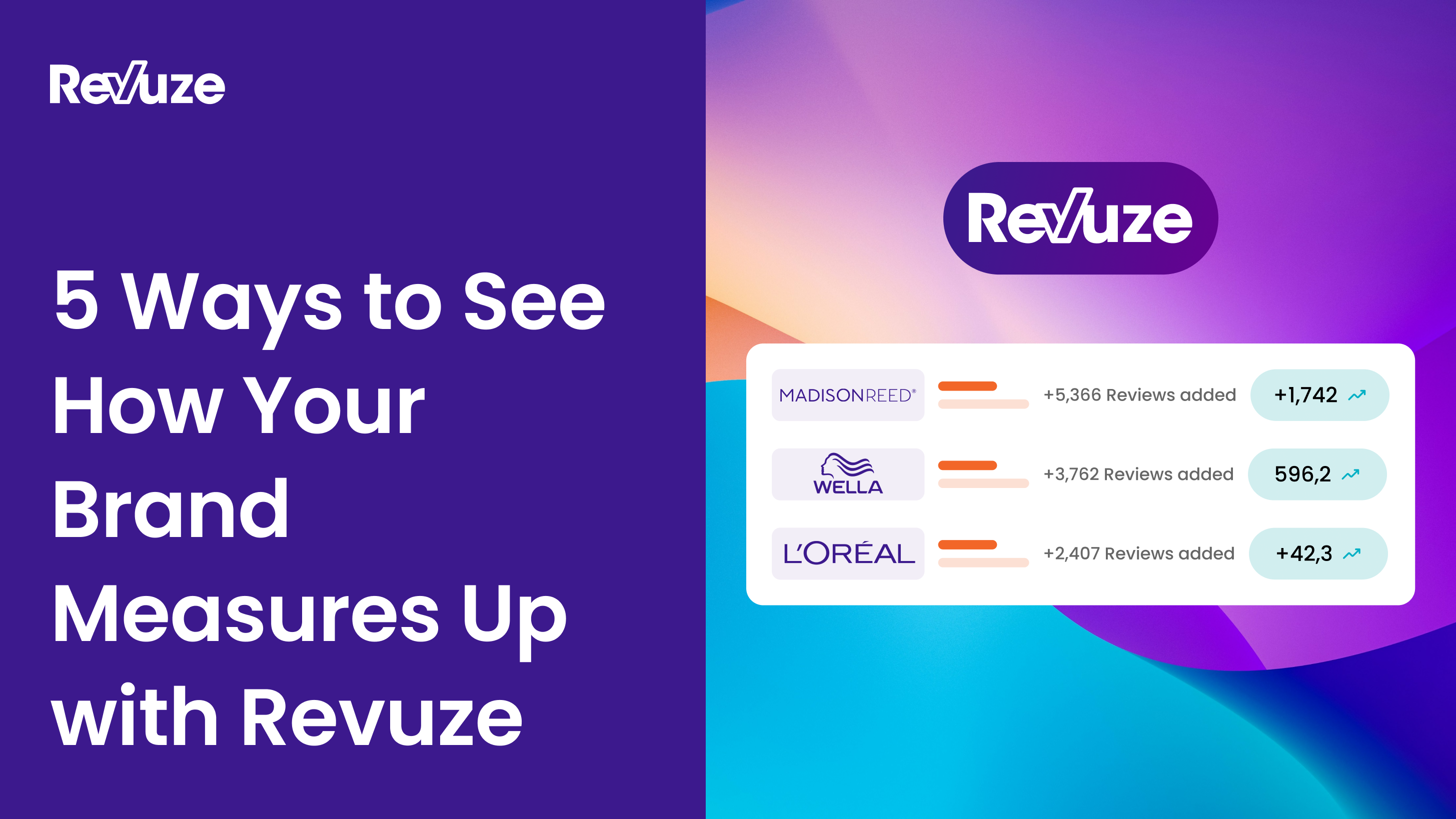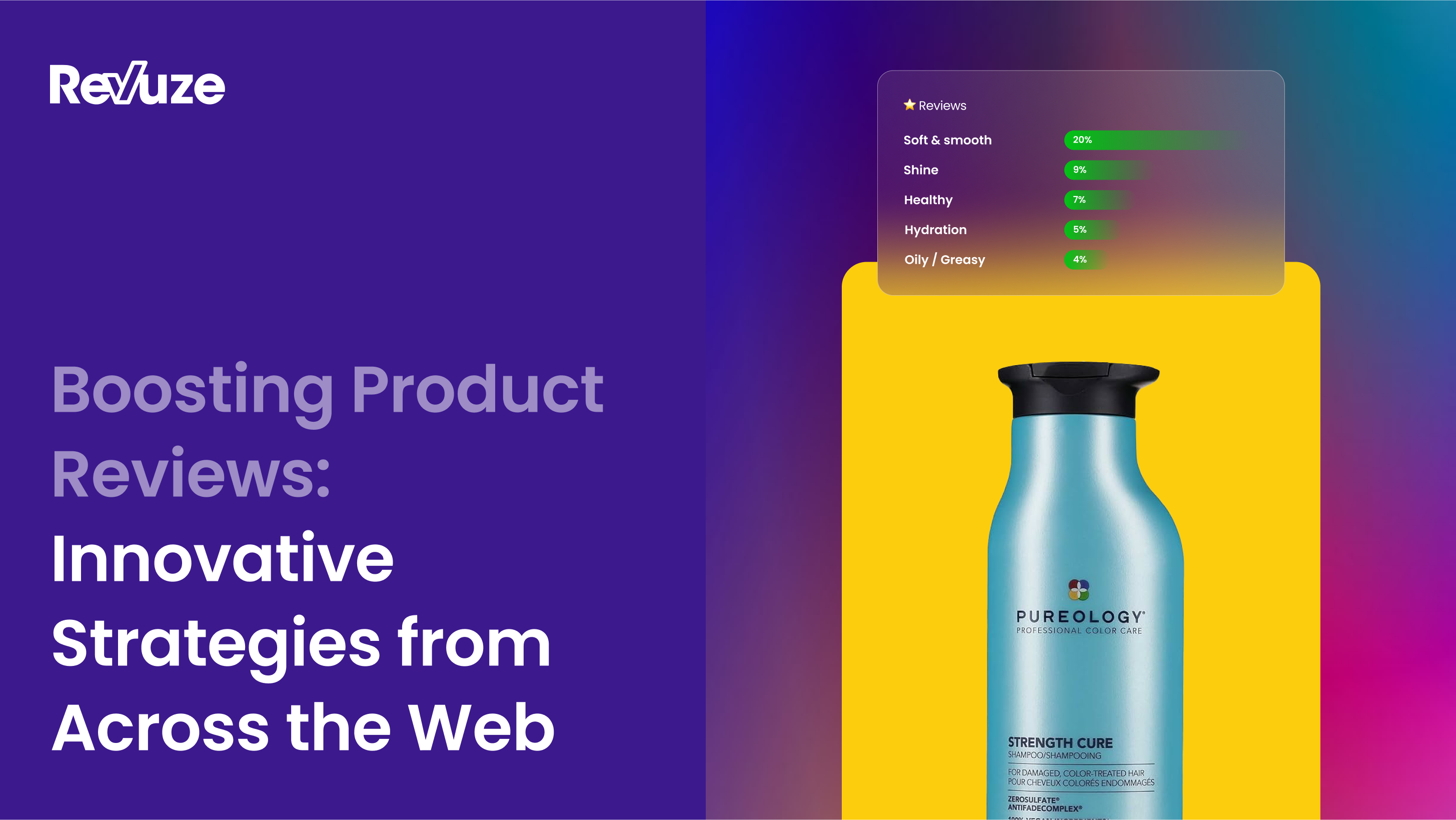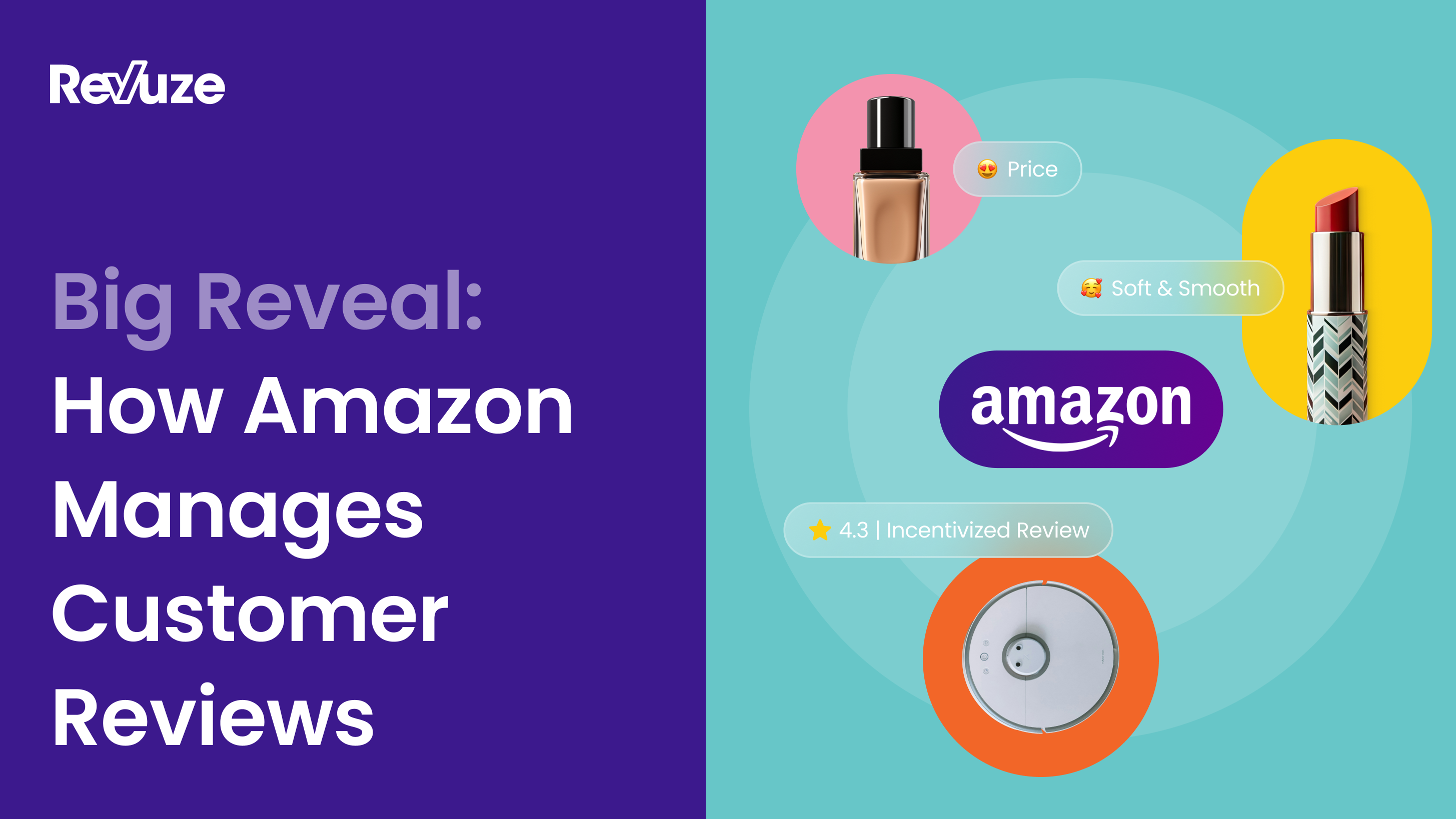
Customer feedback is a treasure trove of information with a wealth of insights to offer businesses seeking to improve products and boost revenue. But having feedback is not enough on its own. To understand what customers tell you, employing customer feedback analysis is a must, especially when done at scale. Learn what it means and how to do so successfully.
One of the most impactful approaches you can take to help your business grow is to become a customer-centric company.
Because not only do customer-centric companies win over the loyalty of their audience for the long term, but they also see the financial benefit of doing so, being 60% more profitable than their competitors.
In order to truly center your business around your customer, you’ll need to create a culture that commits to listening and catering to the customer’s opinions, thoughts, and needs. And there is no better tool for this than customer feedback analysis.
By allowing you to systematically and regularly tap into your customers’ opinions, customer feedback analysis enables you to make smarter, more strategic business decisions that help you retain a highly loyal customer base.
In this article, we review everything you need to know about how to successfully implement customer feedback analysis in order to improve business outcomes.
What is customer feedback analysis?
To understand what customer feedback analysis is and why it’s so important to modern businesses, let’s break the term down into its parts.
The customer part of customer feedback analysis
The customer, or the individual or entity that makes a purchase from your company, is absolutely key to your business’s success.
As much effort as we may spend in building audiences, courting prospects, and attracting users, it is ultimately the paying customer who directly contributes to your bottom line.
In understanding your customers, their needs, their pain points, and their opinions of your brand and your product, you’ll be able to make strategic decisions to improve e-commerce customer experience and customer satisfaction, and boost revenue as a result.
The feedback part of customer satisfaction analysis
Customer feedback is all of the qualitative and quantitative data you receive from your customers that reflect their opinions, preferences, and concerns as they relate to your industry, company, and product.
You can collect customer feedback through a number of channels, including but not limited to:
- Emails
- Surveys
- Customer service portals
- Social media messages and comments
- Third-party review websites
Feedback may be solicited or unsolicited and can come in several forms, including written comments as well as scores and ratings.
The analysis part of customer feedback analysis
Customer feedback is a form of raw data that contains a multitude of valuable insights for your company.
It is the process of analysis that helps you take this raw data, structure it, and explore it in order to find patterns, identify problems, and extract actionable insights that you can implement in order to make improvements to your product and processes.
???? For more analysis examples, check out our blogs on product performance analysis and competitive product analysis.
Why should you analyze customer feedback?
Satisfied customers are the lifeblood of a successful business.
By creating a superior, satisfying customer experience, you are motivating customers to take a number of desirable actions, including
- Paying more.
- Recommending your business/products to others.
- And coming back for repeat purchases.
Indeed, 86% of customers are willing to pay up to 16% more for a superior customer experience. Further, a better retention rate is paramount for businesses seeking growth as existing customers are easier to sell to and are likely to pay more for new products than first-time customers.
Customer feedback analysis holds the key to creating an exceptional customer experience that keeps your customers coming back for more.
By collecting, analyzing, and acting on the insights you find in customer feedback, you will be able to give customers what they want, address any problems, and gain a reputation as a customer-centric company like massively popular and successful brands.
How do you analyze customer feedback?
While analyzing customer feedback isn’t as simple as throwing numbers at a computer, it doesn’t have to be overly complicated.
In the next section, we break the process into five steps. And when working with dedicated customer feedback analysis tools, you can even skip most of them.
Step 1: Collecting customer feedback
The first step of customer feedback analysis is collecting customer feedback. Here are a few important sources of customer feedback.
Customer calls, chats, and helpdesk emails
This unsolicited form of customer feedback is incredibly valuable, as it represents problems and concerns that customers feel strongly enough about to have actively contacted your company to discuss.
For this reason, it is best practice to automate a system in which helpdesk emails and customer service call transcripts are automatically added to a feedback database.

In this chatbot conversation from TheKnowledgeGym, a customer shares important feedback, including how they found a brand, how often they use its product, how they use the product, and more.
Surveys
There are a number of customer satisfaction surveys that are commonly used to collect customer feedback. These include:
- Net Promoter Score (NPS) – This metric measures how likely customers are to recommend your company to a friend or family member.
- Customer Satisfaction Score (CSAT) – This metric measures customer satisfaction by directly asking how satisfied customers are with a product, service, or customer service interaction.
- Customer Effort Score (CES) – This metric measures how hard or easy a customer finds a product or service to use.
You can solicit answers to these surveys through a number of channels, including your website, your mobile app, text message, and email. Individually – and even more so collectively – these surveys can all reveal highly valuable data about customer satisfaction and loyalty.

Here, clothing company Hem & Stitch uses an NPS survey to measure customer loyalty.
Social media comments and messages
Your social media is a fantastic source of customer feedback, with many users these days preferring to reach out to a company with a problem or question over Twitter, Facebook, or Instagram rather than through traditional customer service channels.
Like with customer calls and emails, it is recommended to automatically forward communication received over social media to your feedback database.
However, not all mentions of you on social media will occur on your account, and not all will tag you. For example, a customer might tweet their opinion about your product on their own personal Twitter account without using any tags or hashtags to alert you to the mention.
For this reason, it’s wise to engage in an ongoing practice of social listening, or actively monitoring social media in order to find mentions of your brand, even if it’s untagged.

On Twitter, users are regularly mentioning and posting feedback about brands and products without tagging them.
Online reviews
A final source of customer feedback that we highly recommend tapping into is the online review, a go-to place for customers to share their opinions. You may be able to find reviews of your company in a number of places including:
- Through your own website.
- Through general review websites like Yelp and Google Reviews.
- Through industry-specific review websites like MakeupAlley or Angi.
- On the app store if you have a mobile app.
- Reviews on marketplaces such as Amazon, Etsy, and eBay.

A customer shares a wealth of important feedback about a product’s color, quality, and sizing through an Amazon review.
Step 2: Structure raw data
Once you have collected customer feedback data, you’ll be the proud owner of a giant mountain of unstructured data. In order to be able to learn something from this information, you’ll have to find a way to organize and categorize it into something more useful.
First, we recommend going over the data to identify important keywords such as product names, locations, features, etc. Then, you’ll be able to organize the data into categories, which will allow you to identify trends in the data.
Great, now we have neat and ready-to-analyze data. What’s next?
A great way to draw insights from your data is to categorize it. There are endless ways to do that, so it’s important to know what you’re looking for before starting.
Here are some ideas to get you inspired:
- Topic – If you seek feedback on a specific topic, such as price, delivery speed, or sizing, it is best to categorize data by topic.
- Sentiment – An approach that is often helpful is to split feedback up by whether it is positive, neutral, or negative. Sentiment analysis is one of the best ways to keep informed on how your product is doing.
- Type of feedback – Another option is to categorize based on what the feedback is aiming to do. This can be customers that complain, suggest a new product, request a new color, etc.
- Priority – Some feedback may point to something that needs urgent fixing, like a bug. This is why it can be helpful to organize by priority ranging from less to more urgent.
- Customer type – You may find useful insights by splitting up feedback by customer type, including paying, trial, non-paying, premium, or VIP/rewards status.
- Location – If your company has multiple locations or is international, you can categorize feedback by city, state, or country.
- Product – If you have multiple products, it may be helpful to group feedback by which product it pertains to.
Structuring raw data is something that can be done manually.
However, not only is it incredibly time-consuming, but error-prone humans are liable to make mistakes every now and then.
Instead, most companies will rely on some form of technology for this step, whether it’s simpler Excel sheets or more sophisticated dedicated data structuring software.
Step 3: Identifying insightful data
The next step is to separate the insightful data – or new data that either confirms a hypothesis you had or contradicts your prior working assumptions – from non-insightful data, which is data that points to an issue you already knew about.
When determining whether or not data is insightful, ask yourself:
- Does this data validate a hypothesis we had?
- Can this data motivate us to think more critically?
- Can this data lead us to take action to make an improvement?
- Can this data reshape our strategies?
For the rest of the steps of customer feedback analysis, you can set aside the non-insightful data to focus exclusively on the insightful data.
Step 4: Write a customer feedback analysis report
A customer feedback analysis report is a document summarizing the findings of your customer feedback analysis and laying out recommendations for how to follow up.
How do you write a customer feedback analysis report? We recommend including the following five key sections.
???? Background – Discuss your company’s current state and why you are engaging in customer feedback analysis. Lay out any hypotheses you may have about what you might find in the data. Mention any relevant changes that the company has made recently.
???? Methodology – Explain how you conducted your customer feedback analysis. Review what sources of feedback you used, how you structured your raw data, what tools you used, what your sample size was, and any other relevant details.
???? Results – Display your data in as easy-to-understand a way as possible. Quantitative data can be displayed through graphs and charts. For qualitative data, you may want to choose select quotes to display that demonstrate relevant trends in the data.
???? Analysis – Discuss the insights that you found in the data. What problems came up, if any? What new features or products did your customers request? What surprised you? Were your hypotheses confirmed or contradicted?
???? Recommendations – Make your recommendations for the next steps. Based on the insights you found, what actions can your company take in order to improve business outcomes?
Step 5: Act on insights
It’s important to emphasize that customer feedback analysis is only the beginning of a process of ongoing improvement.
Feedback analysis can serve as an arrow pointing the way in a direction that your company can go in order to improve customer satisfaction and experience.
It’s up to you to follow the arrow and fix the problems, create new products, and make the tweaks your customers ask for.
Example of customer feedback analysis
Let’s say you own a start-up that built an app customers can use in order to identify problems in their house plants, such as pests, underwatering, and insufficient sunlight. One of your company’s values is being data-driven, and you aim to become the go-to plant diagnosis app by becoming customer-centric and offering the features customers will prefer most. For this reason, you have decided to implement an ongoing customer feedback analysis process.
You choose to collect customer feedback through several channels including:
- App store reviews.
- NPS, CSAT, and CES surveys.
- Social media mentions.
- Customer calls, emails, and chatbot messages.
Once you gather a sufficient sample size of customer data, your business decides to categorize it by topic into the following groups:
- Feedback about pricing.
- App bugs.
- Feature requests.
Once you’ve removed non-insightful data and used an AI tool to group your insightful data into the relevant categories, your business intelligence team generates the following important insights from your data:
- Trial users aren’t converting into paid users because they feel that the monthly price of the app is too high.
- Customers are expressing interest in a feature that allows them to browse photos of other plants with the same issue as theirs.
Based on these insights and your BI team’s customer feedback analysis report, your company has decided to lower the monthly subscription fee by 10% and begin work on building the new feature your customers asked for.
Customer feedback analysis and acting on it isn’t some pie-in-the-sky process. It’s something you can do, and your competitors are most likely already doing it.
Customer feedback analysis tools
As we mentioned above, manually conducting customer feedback analysis can be challenging.
The manpower required to go through hundreds or thousands of comments, transcripts, and messages is tremendous, requiring more resources and time than many companies have to spare.
To help you be more efficient and accurate in your customer feedback analysis, here are some tools worth looking into.
Revuze
Revuze is a powerful insights tool that uses AI technology in order to automatically collect unstructured customer feedback data from multiple sources, structure it, and organize it into granular, actionable insights.
Revuze’s machine learning algorithm operates independently to discover relevant topics and trends within the data and analyze sentiment in order to accurately report on customer satisfaction.
This is a great all-in-one customer feedback analysis solution perfect for implementing a more efficient, scalable customer feedback analysis strategy than what you’d be able to achieve by hand.
Typeform
Typeform is an online survey creator known for being highly intuitive and user-friendly. This tool is great for building and sending out customer satisfaction surveys in order to collect feedback to analyze.
Power BI
Power BI is Microsoft’s interactive data visualization software that can help you create reports and model the customer feedback data you collect.
By helping give you a clearer, more visual picture of your data, Power BI can help you better understand it in order to reach valuable insights.
What comes after analyzing customer feedback?
In today’s consumer landscape, it takes more than a great product to win market share.
The modern consumer seeks an exceptional customer experience from brands that makes them feel seen and understood.
In order to satisfy customers, win their loyalty, and gain a brand reputation as a company that puts customers first, you need to tune into what customers are saying about you, what they want from you, and what changes they’re asking for.
Customer feedback analysis is an incredibly powerful process that allows you to keep your finger on your customers’ pulse in order to remain on top of things and continually deliver a delightful experience.
Best of all? With the right tools, you can automate and optimize these workflows so they can become an integral part of your process without eating up all of your time.
Analyzing your customers’ feedback is a never-ending process. One way to gain insights into the minds of your customers is by conducting focus groups. But to make the most out of them, you’ve got to ask the right questions. Find out more in our blog on the topic.
 All
Articles
All
Articles Email
Analytics
Email
Analytics








 Agencies
Insights
Agencies
Insights